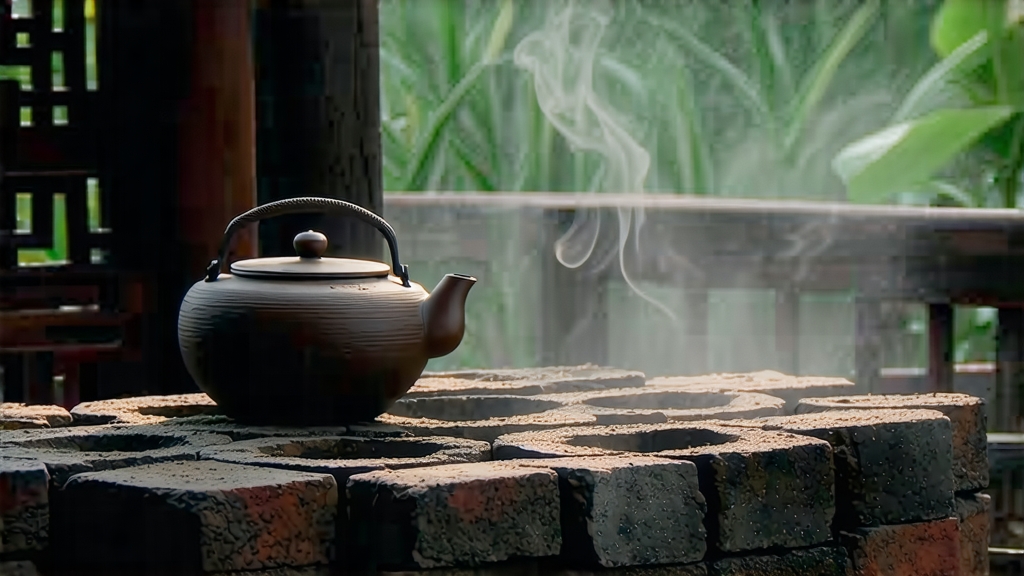
Tucked away in the humid, karst-pocked mountains of southern China’s Guangxi Zhuang Autonomous Region, Liu Bao cha has spent four centuries quietly perfecting the art of patience. To most outsiders “dark tea” means Pu-erh, yet Liu Bao is the older, subtler sibling—an heirloom whose flavour is a liquid ledger of trade routes, minority tribes and slow microbial magic. This article invites the global tea lover to discover why a single cup of Liu Bao can taste like rainforest earth, dried longan, and a whisper of antique library in the same breath.
-
From Song Soldiers to Maritime Silks
The name Liu Bao literally means “Six Forts,” referring to the six defensive garrisons established during the Song dynasty (960-1279) along the Liu Bao Brook in Wuzhou prefecture. Soldiers stationed there found that compressed tea survived the oppressive heat better than loose leaves; the bricks accompanied them southward into present-day Guangxi and soon became currency among the Yao and Zhuang minorities. By the Qing era the tea was rafted down the Xun River to the Pearl Delta, loaded onto “tea fast boats” and sailed to Hong Kong, Macau and finally Southeast Asia where miners and dockworkers prized its ability to “cut the grease” of a rice-heavy diet. In 1801 the Jiaqing Emperor listed Liu Bao as one of the 24 imperial tribute teas, sealing its reputation across the Chinese diaspora. -
One Leaf, Many Faces
Liu Bao is classified by picking standard, piling depth and aging vessel, yielding three main commercial grades:- Gong Ting (Imperial Court): only the unopened bud or single bud-and-leaf, velvet to the touch and highest in amino acids; ages into a silky, date-sweet liquor.
- Ji Ji (Special Grade): one bud with two leaves, the workhorse of connoisseur collections; balances fragrance and body.
- San Ji (Third Grade): larger, more mature leaves; higher polyphenol load gives a gutsier, tobacco-wrapped profile beloved in Malaysian “Kopitiam” culture.
Beyond leaf size, the post-fermentation environment creates sub-styles. “Bamboo-basket Liu Bao” is steamed, packed into 30 kg bamboo cylinders and left in mountain caves where humidity hovers at 85 %; the tea absorbs faint bamboo lactones and develops a powdered-sugar bloom on the brick surface. “Cave-aged” lots rest in disused mining tunnels whose constant 22 °C microclimate slows oxidation to a glacial pace, producing a mossy, camphor nose reminiscent of old sheng Pu-erh yet rounder on the tongue.
- The Craft: Where Tea Meets Microbiome
Unlike black tea’s enzymatic oxidation, Liu Bao undergoes microbial fermentation. The journey begins in late April when the Da Bai cultivar is picked at dawn. Leaves are briefly withered under mountain mist, then wok-fired at 200 °C for three minutes—just long enough to denature leaf enzymes while preserving spores of Aspergillus, Penicillium and the prized Eurotium cristatum, the same “golden flower” that flecks aged Fu brick tea.
Next comes the signature “wet piling” (wo dui). Leaves are sprayed with mineral-rich brook water, stacked 70 cm high under jute tarpaulins and turned every three days. Inside the pile temperature climbs to 55 °C, fostering thermophilic bacteria that convert catechins into theaflavins and gallic acid, softening bitterness and laying the groundwork for that tell-tale betel-nut aroma. After 25–30 days the pile is dismantled and sun-dried on bamboo trays, then steamed again and compressed into 500 g bricks, 30 kg baskets or 7 g “tuo” nests.
Crucially, Liu Bao is never fully dried; 9–11 % residual moisture invites a decade-long secondary fermentation. Warehouses in Cangwu county leave windows open to monsoon air, allowing seasonal swings in humidity that orchestrate a slow waltz between yeasts and actinomycetes. The result is a tea whose chemistry—and flavour—continues to evolve even after fifty years.
- Brewing: Rhythm Over Recipe
Western brewing guides often fixate on grams and millilitres, but Liu Bao prefers intuition. Start with 5 g of loose brick, prised apart gently to preserve leaf integrity. Rinse with 95 °C